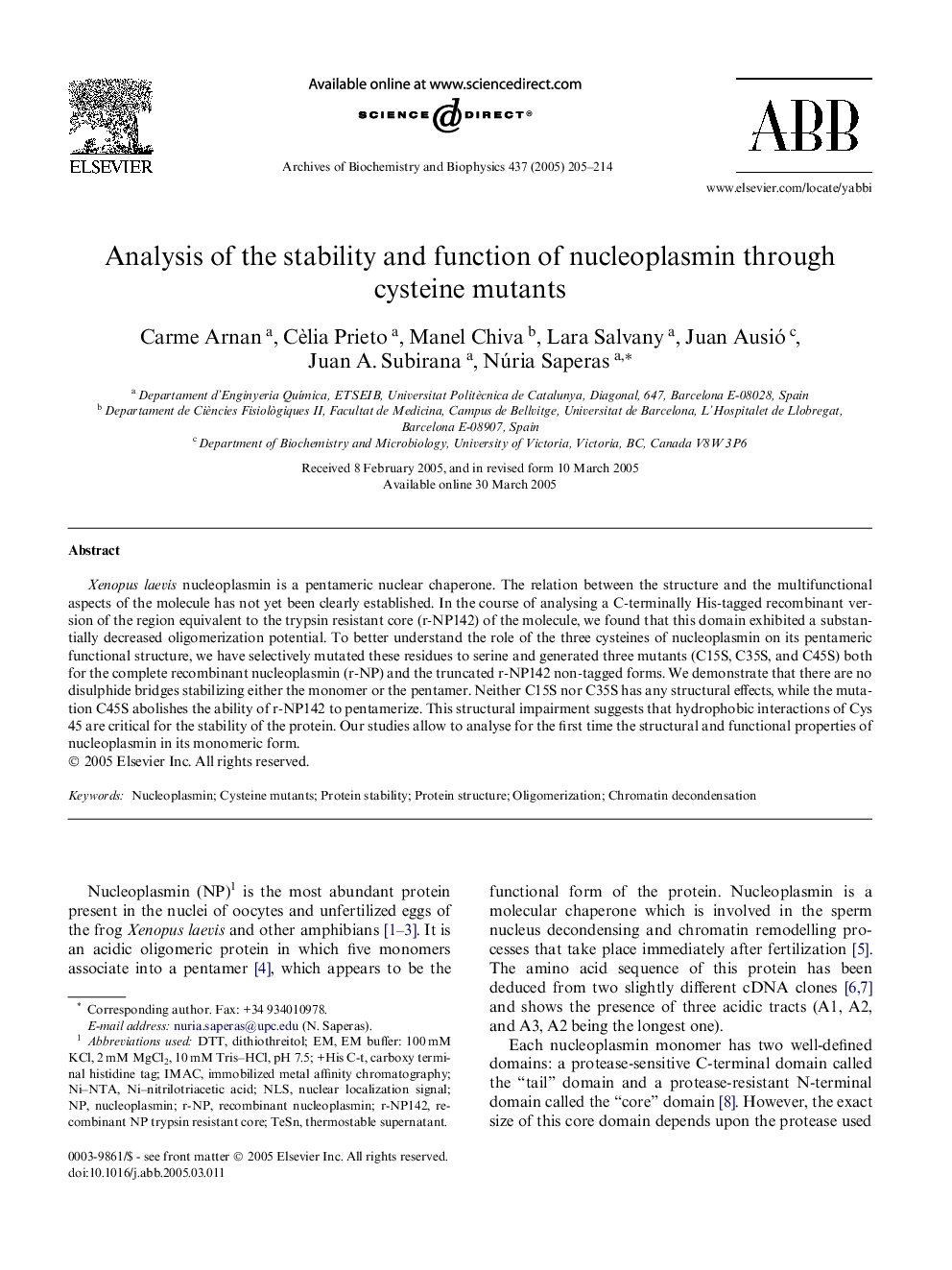| Article ID | Journal | Published Year | Pages | File Type |
|---|---|---|---|---|
| 9882222 | Archives of Biochemistry and Biophysics | 2005 | 10 Pages |
Abstract
Xenopus laevis nucleoplasmin is a pentameric nuclear chaperone. The relation between the structure and the multifunctional aspects of the molecule has not yet been clearly established. In the course of analysing a C-terminally His-tagged recombinant version of the region equivalent to the trypsin resistant core (r-NP142) of the molecule, we found that this domain exhibited a substantially decreased oligomerization potential. To better understand the role of the three cysteines of nucleoplasmin on its pentameric functional structure, we have selectively mutated these residues to serine and generated three mutants (C15S, C35S, and C45S) both for the complete recombinant nucleoplasmin (r-NP) and the truncated r-NP142 non-tagged forms. We demonstrate that there are no disulphide bridges stabilizing either the monomer or the pentamer. Neither C15S nor C35S has any structural effects, while the mutation C45S abolishes the ability of r-NP142 to pentamerize. This structural impairment suggests that hydrophobic interactions of Cys 45 are critical for the stability of the protein. Our studies allow to analyse for the first time the structural and functional properties of nucleoplasmin in its monomeric form.
Keywords
Related Topics
Life Sciences
Biochemistry, Genetics and Molecular Biology
Biochemistry
Authors
Carme Arnan, Cèlia Prieto, Manel Chiva, Lara Salvany, Juan Ausió, Juan A. Subirana, Núria Saperas,
